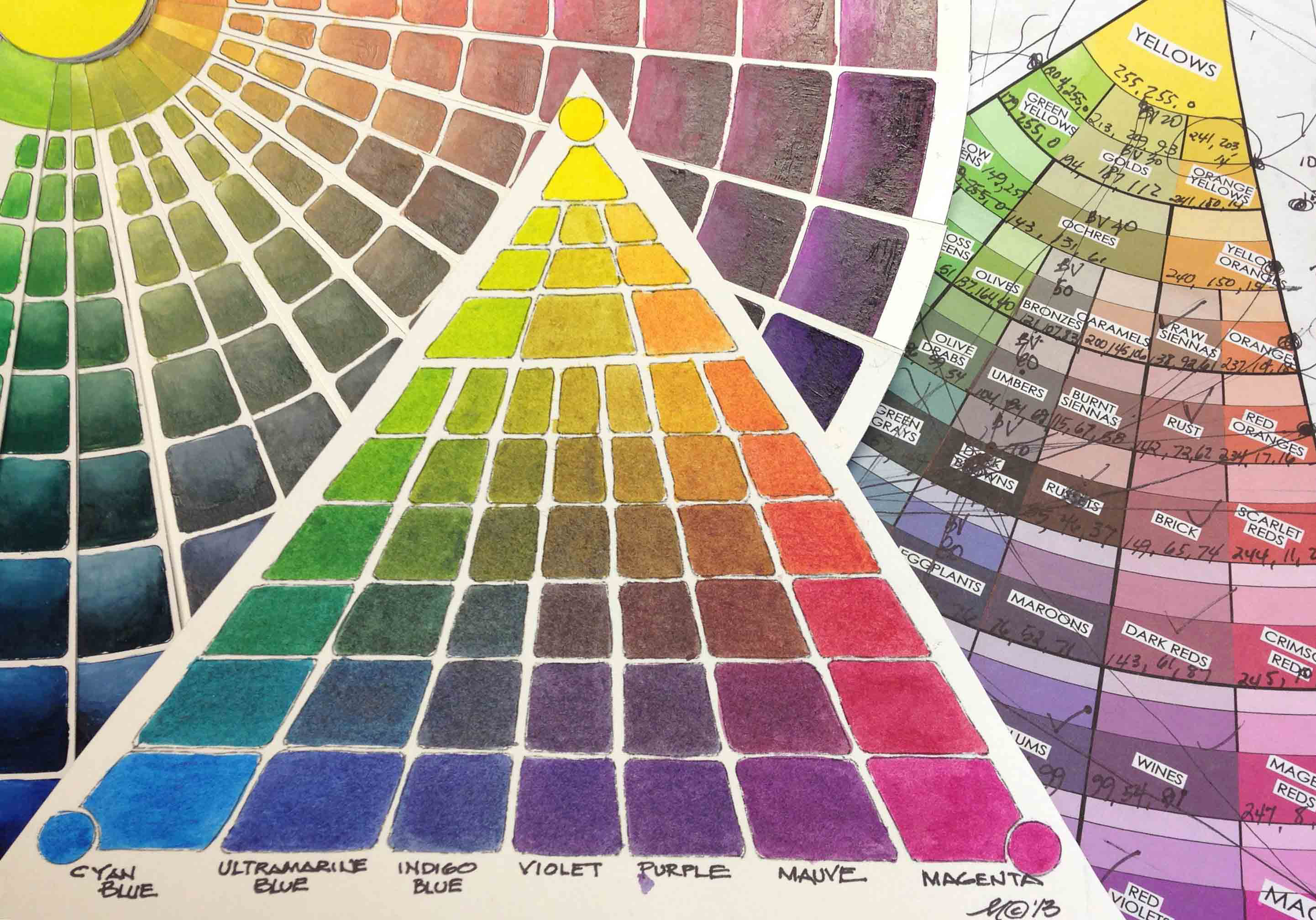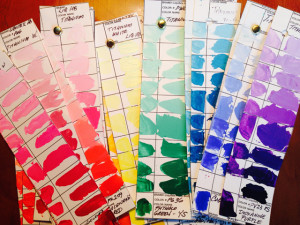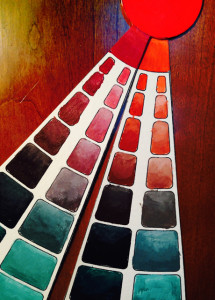Color Scales Extravaganza
 Do you want to do some color studies but just can’t find the time? Treat yourself to a day of color immersion as you learn how to make three simple variations of color scales. Easy to make color scales – sometimes called color strings – record the fullest range of colors possible between two selected colors.
Do you want to do some color studies but just can’t find the time? Treat yourself to a day of color immersion as you learn how to make three simple variations of color scales. Easy to make color scales – sometimes called color strings – record the fullest range of colors possible between two selected colors.
After forty years of mixing colors, Maggie Maggio has developed many fun and fast techniques for making all kinds of color scales. After a meditative day of guided color exercises, you will leave with a huge amount of experience under your belt and the beginnings of a collection of invaluable resources for mixing any color you want.
 Test Mixing Scales
Test Mixing Scales
Test mixing is recommended anytime you pick up new colors or materials. A few quick and loose color scales to white, water, or any clear medium can provide invaluable information about the tinting strength, opacity and bias of a new color as well as give you an immediate feel for how it handles. Bring your favorite colors to test – or new colors to try out.
 Color Chart Color Scales
Color Chart Color Scales
Mixing every color on your palette to all the other colors is a standard color mixing exercise. The best way to do this is with color scales instead of the standard grid or matrix. Not only will you be able to see more colors than just the half-to-half mix, you can continue to add to your collection every time you pick up new colors.
These color chart scales are designed to be connected into a fan deck that spreads out to show all the colors and their tints. Bring four colors to practice mixing to each other.

Sample Mixing Map
Limited Palette Scales
Color scales are a simple way to map the gamut (or range) of colors possible using just three colors. The Maggio Mixing Map is a triangular chart that starts with five base colors between the blue/cyan and the red/magenta corners. After the base colors are mixed, a series of five vertical color scales are mixed from the base colors to yellow. The result is a visually balanced chart that includes higher saturation colors on the outside of the triangle and lower saturation colors on the inside. All of the colors can also be tinted if time permits.
After a quick introduction to the principles of Maggie’s base mixing system, you will have the opportunity to choose three colors and start creating a customized Mixing Map to take home and finish in your studio.
Note: All the exercises can be done in the medium of your choice. The templates and tools are provided.
